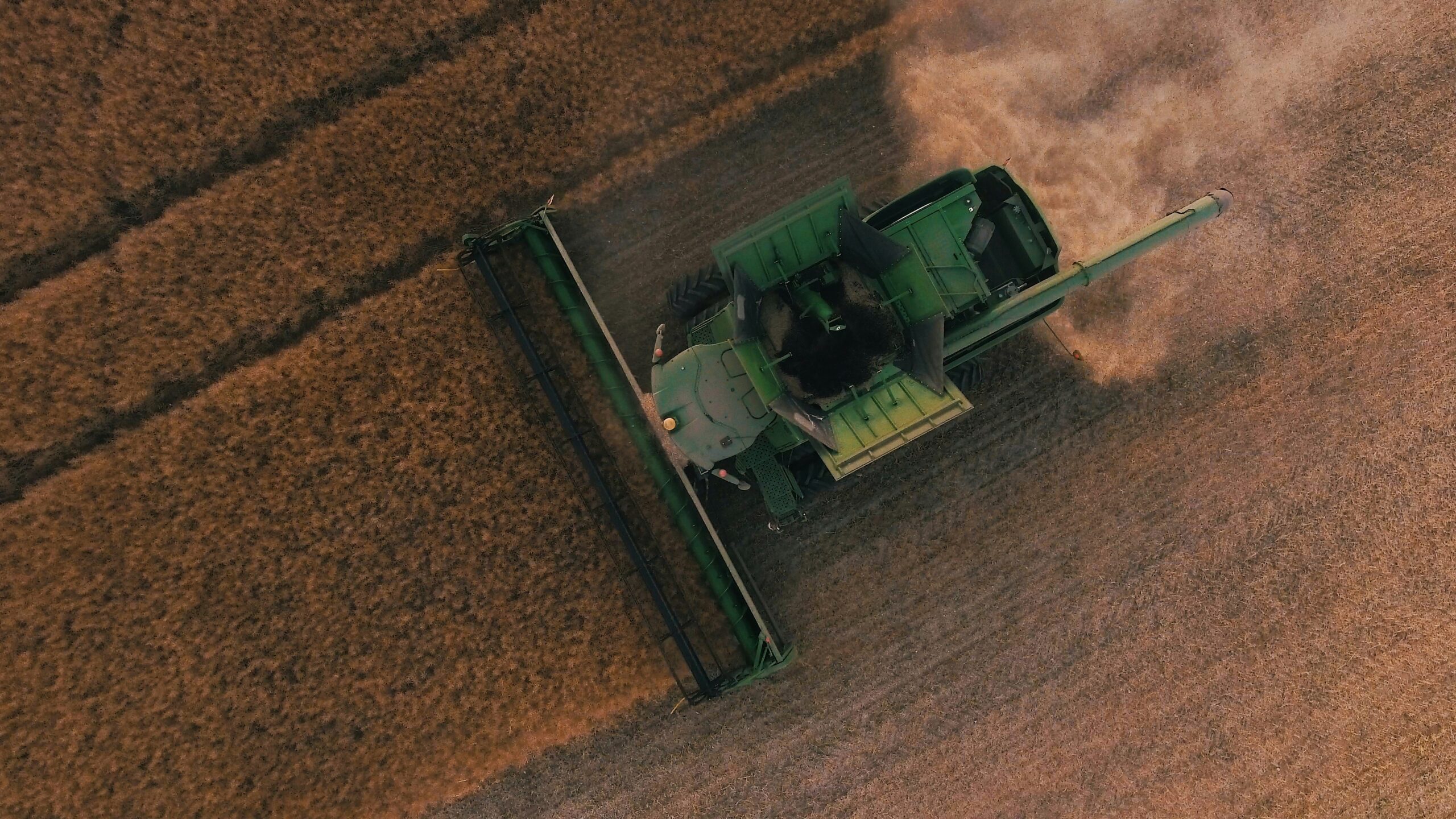 Image description: Aerial view of a green combine harvester harvesting a field. Image by Scott Goodwill on Unsplash
Image description: Aerial view of a green combine harvester harvesting a field. Image by Scott Goodwill on Unsplash
An investigation carried out by the Guardian and Watershed Investigations revealed more than 750,000 tonnes of liquid from landfills are mixed with sewage at water treatment works and spread on farmland across England each year.
Production of leachate
Leachate refers to the liquid that drains through landfill waste carrying a cocktail of chemicals. Generated by hundreds of landfills across the country, leachate is regularly tankered to sewage treatment works, where it mixes with domestic sewage and industrial effluent to create sludge, also described as “biosolids”.
While the Guardian reports that leachate from some inert landfills may be harmless, others it says contain a toxic chemical mix. Operators only carry out basic monitoring and sewage works are unable to deal with some of the chemicals found in leachate such as Pfas “forever chemicals”. This lack of oversight is particularly concerning when many of these chemicals are carcinogenic, as well as PCBs, dioxins, flame retardants, solvents, endocrine disruptors, microplastics and other hazardous chemicals.
The Guardian warns that most contaminants remain unregulated, as checks of the leachate when it arrives at the sewage treatment works are minimal and sludge is still tested only for heavy metals under outdated 1989 rules.
Expert warns “the whole system is out of control”
Analysis carried out by the Guardian and Watershed Investigations revealed about 3.5m tonnes of leachate are generated each year, with more than 750,000 tonnes sent to sewage works.
The joint analysis found about 1.7m tonnes of leachate received only basic biological treatment. Of the 750,000 tonnes sent to water company works and mixed with sewage, about 536,000 tonnes were treated this way. The Guardian report that these volumes add strain to these treatment plants, contributing toward raw sewage spills into rivers and seas.
The figures also revealed a regional imbalance in the amount of leachate generated, with Landfills in the south-west reporting 1,264,563 tonnes, followed by the north-west at 719,405 tonnes and the south-east (excluding London) with 500,835 tonnes.
Forensic scientist and Pfas expert Dr Dave Megson told the Guardian he was “amazed that this was happening”, having assumed it was only “a relatively minor practice” under strict controls. “It seems like the whole system is out of control,” he said, saying that most sewage plants were designed for human waste, not chemical effluents, and that adding large volumes of leachate could “disrupt the efficiency of treatment sites” and make them less effective.
Environment Agency response
The Guardian reports the Environment Agency (EA) acknowledged that while some leachate was pretreated before going into the sewage system, some was directly discharged or tankered into sewage works, along with other industrial effluents and domestic sewage.
An EA source said some plants accepted leachate without the necessary permits, meaning sludge volumes could likely exceed official figures.
The agency is now drafting standard rules permits for tankered liquid wastes, but the Guardian reports it would still lack the resources to update the system quickly. Due to the five-year investment cycle overseen by Ofwat, water companies would not have the right technology in place for years even if Ministers called for tougher standards.
An EA spokesperson said it was “working closely with the landfill industry and water companies to better understand the challenges these chemicals pose … including reviewing all tankered waste disposals at wastewater treatment works to ensure permit conditions protect the environment and are being met.”